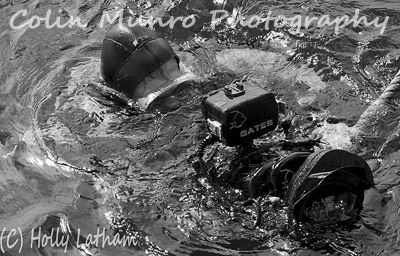The Three Sisters, Glencoe, Scotland.
The Three sisters are three steep-sided ridges forming part of the mountain complex Bidean nam Bian along southern side of Glen Coe. These ridges are Gearr Aonach (Short Ridge), Aonach Dubh (Black Ridge) and Beinn Fhada (Long Hill). The summit of Bidean nam Bian lies at 1150m (3773ft) making it the highest mountain in the former county of Argyll (regional boundary changes in recent years means Argyll no lnger exists as a county). Bidean nam Bian is popular with walkers and Munro-baggers (Munros are Scottish mountains over 3000ft) summer and winter. The most popular route passes down through the col (low gap between two peaks) between Bidean nam Bian and Stob Coire Sgreamhach, more commonly known as the hidden valley or lost valley. The name derives from it’s reputation as a hiding place for rustled cattle taken by the Clan Macdonald in earlier times and the fact that the valley is all but hidden from view until one is in it.
Glen Coe is an awe inspiring landscape of looming mountains, the soul of which is most clearly seen on darky and stormy days. It is sometimes known as the ‘Glen of Weeping’ in reference to the Massacre of Glen Coe in February 1692 when Thirty-eight men of the Clan MacDonald were killed in the night by soldiers from the Earl of Argyll’s Regiment of Foot who they had accepted in as guests. Many more died of exposure on the hills as their homes had been burnt down. The soldier in command of the Foot Regiment was Captain Robert Campbell of GlenLyon; this fact, allied to an existing history of feuding between the Campells and MacDonalds and attempts by the Government of the time to deflect blame and have this seen as no more than inter-clan feuding. The orders for the massarce were in fact signed by King William II (King Willaim III or England).
The dramatic scenery of Glen Coe has formed the backdrop for many big budget films; these include Highlander, Rob Roy, Braveheart and, more recently, Harry Potter and the Prisoner of Azkaban. In the summer of 2003 vistors to the glen occasionally stumbled across Hadrig’s hut nestly behind the Clachaig Inn.
The picture. I took this image at 16:45 on the 31st of October 2013 (Hallowe’en). I was on a brief walking and camping trip with my ten year old son during school half term. It was a wild day; storm force winds were battering the west coast. The wind was literally howling down through the glen driving needles of rain before it and forcing me to keep one hand on my camera tripod at all times lest it was blown over. At 15 minutes to 5pm the sun had just set, though this was not obvious through the thick black cloud overhead, but an already gloomy day was darkening rapidly. As light was disappearing I dispensed with the polarising filter I had been using earlier but kept the gradient nuetral density filter. The image is a composite of three seperate exposures, ranging from a 1/60th to a 1/15th of a second duration, to capture detail in both the dark mountain shadows and the clouds overhead. Between each exposure rain droplets had to be carefully dried off the filter in front of the camera lens and the entire camera covered by my jacket (taking care not to accidentally jostle the camera or tripod) until the next brief gap between squalls allowed another image to be taken.
Find me on Google+ Colin Munro
Like my page on Facebook
My main website Colin Munro Photography

